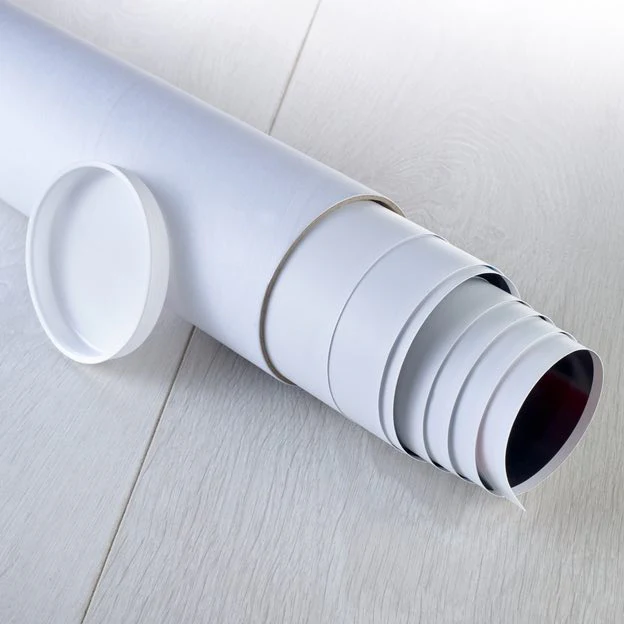Hoisting anchor and stowing the cable
A coloured schematic diagram on two joined sheets showing the inboard operations involved in hoisting anchor and stowing the cable on a British warship. It probably dates to the 1790s based on the dress of the Marines being used, as they were, to man the main waist capstan, shown in plan view for the upper deck and in elevation on the gun deck immediately below though the number involved suggests the ship is larger than a frigate: i.e. a deck may have been omitted above the orlop here shown immediately below that holding the cable tier. The Marines facings are white, rather than the blue they were after becoming ' royal' on 1803. The ship has both a veering cable and a main cable out. The main cable passes through a single (starboard) hawsehole shown to the right, probably for a bower anchor, and is being stowed in the cable tier by a gang of men. The veering cable may be being handed out from below from the tier as the ship shortens up onto her anchor, though where it goes at the outer end is unclear: presumably to a second anchor dropped at a different point, which will subsequently be hoisted in. On the foc'sle there are both a forward and aft cathead with tackles ready to hook on once the anchor being hoisted clears the water. As the Marines, with supervising seamen, drive the capstan bars round on the upper deck the cables are drawn in by a messenger (a continuous loop of rope) operating round the capstan barrel on the lower deck using 'nippers'. These are the three hatless men in the foreground: at far right, a pair of them lash the messenger to the incoming cables to continue the hoisting; further left, one by the centre hatchway undoes the previous lashing. The seamen behind hand the loop of messenger forward over rollers fixed to the deckhead above. A seaman at far left stands ready to pawl or chock the capstan immobile with a bar wedged at the base of a deck stanchion and then tie off the messenger with the loose line also attached to the stanchion while the foc'sle crew above 'cat' and stow the anchors. In the cable tier below, between the after cockpit and the companionway rising from the forward cockpit to the gun deck (the middle level) above, two other gangs of seamen separately coil down the veering cable and the main bower cable. Only the fore part of the ship is shown, with the main and foremasts, and part of the beakhead (right): the foremast is represented cut off at foc'sle level and the mainmast at orlop level, though both would in reality have been stepped further down on the kelson and keel below. Between the forward hatch and the hawsehole are the riding bitts to which the cables would have been secured for the ship to lie at anchor. A lower-deck forward capstan is placed aft of the forward hatch, omitting the central spindle which would have gone down to the deck below. The three square pillars by the mainmast, with iron handles pivoted in the two deck stanchions immediately aft are the ship's chain pumps for removing water from the bilges below, although the pump arrangement is otherwise unclear. The naive artistic charm and historical record value of the drawing are incidental to its likely original purpose: it was probably made by someone like a young midshipman to explain the operation shown to landsmen friends or relatives, or demonstrate his understanding of it for training purposes.
Object number: PAI5027Date: probably 1790s
Original dimensions: 407 mm x 641 mm
- Image reference: D4802
- National Maritime Museum, Greenwich, London
Discover more
More by this artist
Search for similar images
Product images of Hoisting anchor and stowing the cable



Our prints
We use a 240gsm fine art paper and premium branded inks to create the perfect reproduction.
Our expertise and use of high-quality materials means that our print colours are independently verified to last between 100 and 200 years.
Read more about our fine art prints.
Manufactured in the UK
All products are printed in the UK, using the latest digital presses and a giclée printmaking process.
We only use premium branded inks, and colours are independently verified to last between 100 and 200 years.
Delivery & returns
We print everything to order so delivery times may vary but all unframed prints are despatched within 2-4 days via courier or recorded mail.
Delivery to the UK is £5 for an unframed print of any size.
We will happily replace your order if everything isn’t 100% perfect.

















